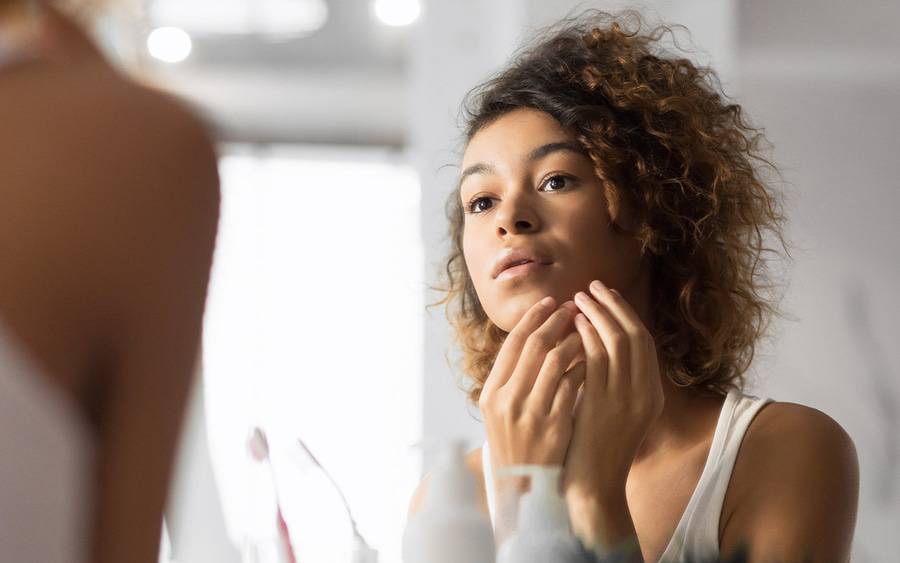Sensitive Skin? Discover the Right Acne Scars Treatment for Your Requirements
Sensitive Skin? Discover the Right Acne Scars Treatment for Your Requirements
Blog Article
Exploring Skin Disease: Treating and identifying Acne Scars for Healthier Skin
Acne scars stand for a substantial issue for people looking for to keep healthy skin, as they can impact both look and self-worth. Understanding the numerous kinds of scars, from atrophic to hypertrophic, is essential for figuring out proper therapy choices.
Recognizing Acne Marks

The body's all-natural healing process can result in either atrophic scars, which look like clinical depressions in the skin, or hypertrophic marks, which are raised and result from overproduction of collagen. Additionally, the emotional toll of acne marks ought to not be ignored; several people report feelings of embarrassment, anxiety, and lowered self-worth. This psychological worry can influence social interactions and overall lifestyle.
Resolving acne marks calls for an extensive understanding of their formation and influence. Recognition of the possibility for long-term repercussions connected with without treatment scars can encourage people to seek proper therapies. Early intervention and reliable management techniques can dramatically improve skin appearance and boost psychological resilience, emphasizing the importance of recognizing the intricacies surrounding acne scars.
Types of Acne Scars
Acne marks can be classified right into unique types, each exhibiting special features and needing details therapy strategies. acne and acne scars treatment. The main sorts of acne scars include atrophic, hypertrophic, and keloid marks

Hypertrophic scars, in contrast, are raised above the skin degree and are the outcome of too much collagen manufacturing throughout the recovery procedure. They generally stay within the limits of the original acne lesion. Keloid scars are similar however prolong past the initial injury site, developing larger, increased areas that can be uncomfortable or itchy.
Understanding these kinds of marks is important for choosing suitable treatment choices. Different scars may react better to specific therapies, such as laser treatments, fillers, or surgical interventions, emphasizing the importance of a tailored strategy to acne scar management.
Determining Your Marks
Acne scars generally drop into two categories: hypertrophic and atrophic marks. These can additionally be classified right into ice-pick marks, boxcar marks, and rolling scars, each showing distinct attributes and requiring different approaches for analysis.
Hypertrophic marks, on the various other hand, are raised and take place due to too much collagen production during the recovery procedure. Identifying the certain features of your marks-- such as size, appearance, and deepness-- is necessary for correct identification (acne scars). Furthermore, take into consideration the circulation of marks across your skin, as this can suggest the intensity and duration of the acne problem
Involving with a skin doctor can offer valuable understandings into the nature of your scars, aiding in the differentiation in between various kinds. A complete understanding of your marks will inevitably bring about a more customized and efficient therapy strategy, making certain a more clear and much healthier skin.
Therapy Options Available
Identifying the certain kind of acne scars existing on your skin lays the foundation for discovering reliable treatment options. Usual kinds of acne scars include atrophic (clinically depressed), hypertrophic (increased), and post-inflammatory erythema.
For atrophic scars, choices such as chemical peels, microneedling, and laser resurfacing are extensively utilized. Chemical peels utilize acids to eliminate the external layer of skin, promoting new cell growth. Microneedling includes little needles that create micro-injuries, stimulating collagen manufacturing. Laser resurfacing targets harmed skin cells, improving texture and tone.
Hypertrophic marks can be treated with corticosteroid injections to flatten the mark or Go Here laser therapy to minimize soreness and enhance appearance. Silicone gel sheets and stress dressings may likewise assist in managing raised marks.
In enhancement, dermal fillers can briefly fill out anxieties from atrophic scars, while surgical excision might be proper for extreme situations. Each therapy option has its considerations and advantages, making it necessary to seek advice from a skin doctor. They can supply individualized recommendations based upon the kind and seriousness of your scars, in addition to your skin kind and overall health and wellness.
Tips for Avoidance
Effective prevention strategies can significantly decrease the their website possibility of establishing acne scars. Using non-comedogenic products helps prevent clogged pores, which can exacerbate acne.
Avoiding need to stand out or pick acne sores is essential, as this can cause much deeper skin damage and boost the danger of scarring. Instead, take into consideration using a chilly compress or over the counter therapies to lower swelling and soreness.
Sun security is an additional important aspect of avoidance; ultraviolet (UV) rays can dim marks and prevent the healing process. Applying a broad-spectrum sun block with at least SPF 30 daily can secure the skin and promote also recovery.
Last but not least, keeping a well balanced diet regimen rich in minerals, anti-oxidants, and vitamins sustains skin wellness and healing. Staying Recommended Reading hydrated and managing anxiety degrees can additionally play a substantial role in lowering acne flare-ups. By applying these strategies, people can considerably lessen their chances of establishing acne marks.
Verdict
In verdict, understanding and identifying acne scars is vital for efficient treatment and achieving healthier skin. Various types of acne scars, including atrophic and hypertrophic scars, necessitate specific treatments customized to private demands.
The body's all-natural recovery procedure can result in either atrophic scars, which show up as depressions in the skin, or hypertrophic scars, which are elevated and result from overflow of collagen. They are additional separated into 3 subtypes: ice choice marks, boxcar scars, and rolling marks. Acne marks typically fall into 2 categories: atrophic and hypertrophic scars. These can better be categorized into ice-pick scars, boxcar marks, and rolling marks, each showing unique features and calling for various approaches for evaluation.
Different types of acne marks, including hypertrophic and atrophic marks, require details interventions customized to individual demands.
Report this page